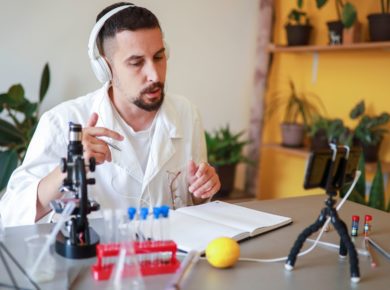The past tense is used to talk about actions and events that have already happened in the present. For example, you might say, “We ate dinner at eight o’clock” to talk about what you did last night. There are two ways to talk about the past: perfect and simple past tense. The perfect tense has a special set of endings that tell us when something happened or will happen in the future. The simple past has a single ending and doesn’t include any future references. There is no simple past form for the present tense.
All the verbs in the following tables (except where noted) are regular
In each case, the “to” + verb ending is usually omitted except in writing or to emphasize.
(a) The simple past (non-continuous) is used to talk about things that happened at a specific time in the past. For example:
(b) The simple past (non-continuous) is used to talk about things that have been true for some time and do not change. Non-continuous means that it does not include an “ing” form and does not describe continuous action. For example:
(c) The simple past (completed) is also called the “past historic”. This form is more literary and formal than the simple past (non-continuous). It is used to talk about events that occurred on a specific day. For example:
(d) The simple past (non-continuous with action verbs) includes an “ing” form. It can be used to describe events that happened over some time and had no ending point. For example:
(e) The perfect tense has a special set of endings and is used to talk about actions that happened at a specific time in the past or actions that are true for some time in the past.
7 Easy Ways to Teach the Simple Past
1. Explain the difference between the simple past and perfect tense
The objective is to clarify the difference between present perfect and past simple so that students clearly understand how to use each tense. This will enable them to decode difficult texts such as “They have won” when reading English texts. It is also important for students to be aware of different uses of these tenses, e.g. ‘simple’ structure or storybook narratives, reported speech vs. direct speech, narrative stories/news reports…
2. Give alternatives for “I was…” and “I was not…”
The objective is to introduce the students with replacement words for three forms of negative statements, i.e., “I was not … “, “I haven’t … “, and “I do not … “. The teacher should try to give examples, e.g.,
3. Teach the vocabulary
The objective is to familiarise students with simple past grammar and its vocabulary. Some verbs cannot be used in the simple past, e.g.,
*Verbs with forms like ‘go’, ‘have’, ‘take’…
*Verbs that follow ‘be’ or a linking verb or modal verb, e.g., has/are/was/were… *Verbs which have several possible meanings in present perfect and simple past tense, e.g., know, like…. *Verbs which have irregular past tense forms, e.g., come, go… *Verbs which have a similar meaning to the ones mentioned above, e.g., stop, begin…
Suggested – How Much Online Teachers Could Make By Teaching English Online
4. Teach the students how to ask for repetition and clarification in English
The objective is to teach students how to ask for repetition and clarification in English. Therefore, the students must be able to practice these phrases in their daily life. Also, this will enable them to understand the teachers more clearly! Some examples include:
5. Teach the students the names of the seasons in English
The objective is to make the students familiar with names of the seasons. Therefore, it is best if they can describe or give an example to illustrate a particular season instead of just saying its name. This will enable them to understand English materials better.
6. Present simple past and perfect tense as a picture story
The objective is to make students understand that these two tenses are often used together. Simple past and perfect tenses use special forms for certain verbs, but their differences can be unclear at first sight. This activity will enable students to understand when to use simple past and perfect tense in English text more easily.
7. Teach students how to make a personal timetable for their lessons
The objective is to make the students plan how they want to learn English. It is helpful if students can predict what will be mentioned in each lesson and compare the teacher’s lecture and textbook. If a personal timetable is prepared, it will be easier for the students to remember what they have learnt in that class. Also, if they choose which topic they will do homework on according to their timetable, they may find it easier to remember it later.
Conclusion
Students must learn how to use simple and perfect tenses in English. As teachers, we should not just teach these tenses orally but also in a situation where they may need it.
For example, the passage given by the teacher can be written on a board or put up on the board and then asked the students to read it again and pay attention to the grammar points mentioned in each sentence. This will increase fluency and comprehension of spoken English.
Connect with us and get your own app and know more about how you can expand your online coaching business.




